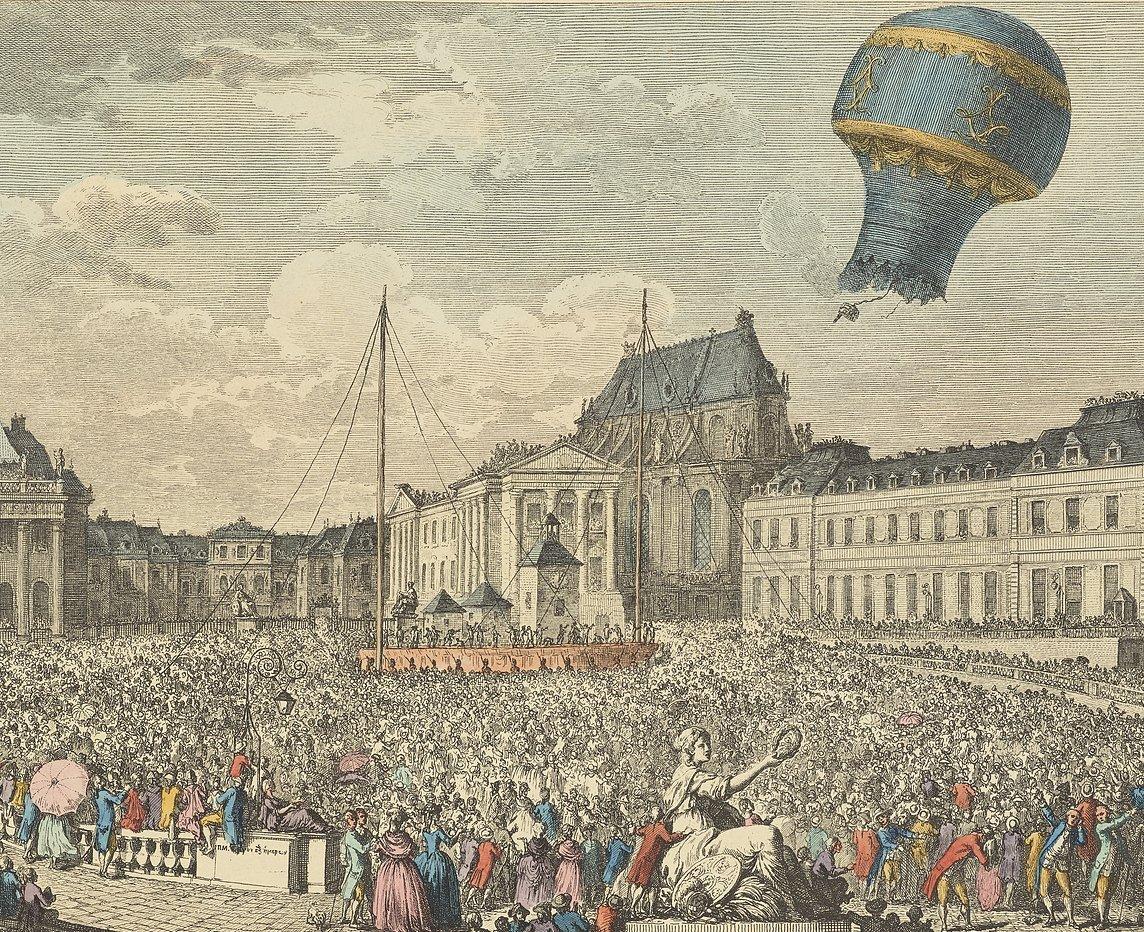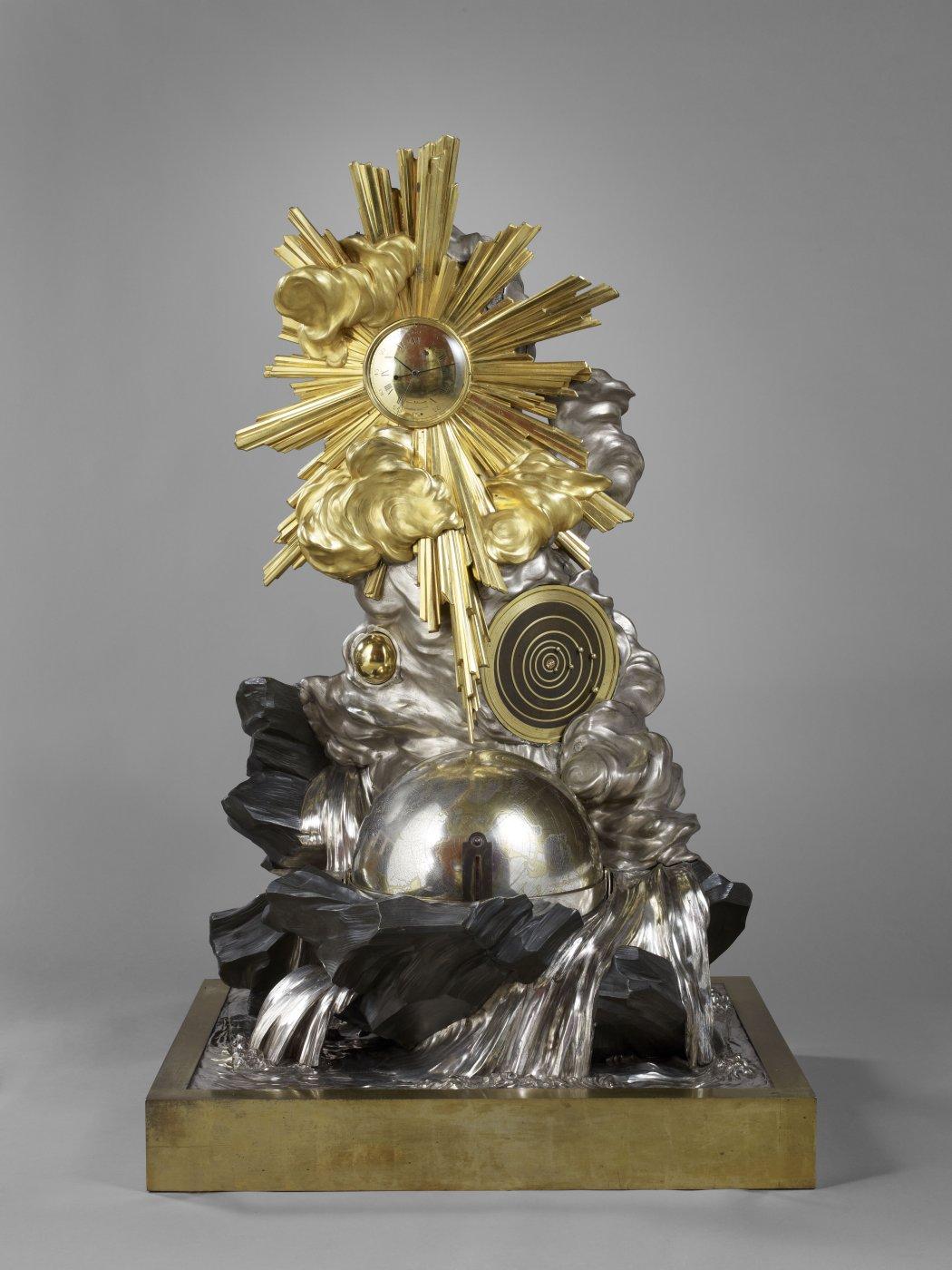How the Palace of Versailles acted as a cradle of scientific invention

An exhibition at London‘s Science Museum shows how the French courts of Kings Louis XIV-XVI were as renowned for their innovation as their opulence.
A version of this article first appeared in the winter 2024 issue of Art Quarterly, the membership magazine of Art Fund.
Although the Palace of Versailles is often associated with its art, architecture and spectacle, it is less well known as a place of serious scientific endeavour under the reigns of the French kings Louis XIV, Louis XV and Louis XVI. Yet between the mid-17th and late-18th centuries, these three monarchs each harnessed scientific knowledge to heighten their prestige and extend France’s global influence.
Originally a modest royal hunting lodge, Versailles was transformed into a magnificent palace by Louis XIV’s vision. It became the heart of power in 1682 when the king moved his government and court to Versailles, with its orbit of influence extending to royal institutions in Paris. At a time when France was Europe’s most populous country and its leading military power, Versailles became an expression of France’s pre-eminence – and science played a vital role.
The Science Museum’s new exhibition, ‘Versailles: Science and Splendour’, will reveal scientific culture not only as a royal passion but also an important aspect of life at Versailles that pervaded many different spaces, such as private royal cabinets and gardens, as well as functions of government, from improving the health of subjects to the administration and defence of France.
King by divine right, Louis XIV ruled an absolute monarchy from Versailles. With his minister Jean-Baptiste Colbert, he sought to centralise and consolidate power. He surrounded himself with the leading artists of the time and fashioned himself as a protector and patron of the arts and sciences.
Aware of the strategic importance of knowledge and expertise, he ordered Colbert to establish the Royal Academy of Sciences in 1666. Leading scientific thinkers from across Europe were brought under the king’s patronage by the Royal Academy; these experts furthered scientific knowledge and contributed pragmatic solutions to the problems and concerns of the time, glorifying the king.
One of the most eminent intellectuals invited to join the newly founded Royal Academy was the brilliant Italian astronomer and mathematician Jean-Dominique Cassini (born Giovanni Domenico Cassini), who was renowned for his work on Jupiter’s satellites. He arrived in Paris in 1669 and soon became the director of the newly built Paris Observatory.
Cassini began to work on an accurate map of the moon as it was believed it could serve to calculate longitude, essential to drawing up precise maps and to improving navigation, and therefore strategically significant. Over the course of eight years, Cassini made detailed observations of the moon, drawing on his exceptional observational skills and the ability to use cutting-edge telescope lenses. His notes and sketches served as the basis for drawings by Sébastien Leclerc and Jean Patigny, and a subsequent engraving was completed in 1679. The print remained the most detailed map of the moon until the 19th century.
Several members of the Royal Academy, including astronomers and engineers, were also enlisted to transform the grounds of Versailles into a statement of power. Landscape architect André Le Nôtre laid out vast gardens relying on perspective and symmetry to create a dramatic effect, often focusing on spectacular fountains. The unprecedented scale and ambition of these gardens presented a challenge, however: Versailles lacked natural water sources to supply the fountains. Various solutions were sought, the most impressive scheme being undoubtedly the Marly Machine, a gargantuan hydraulic system that was built between 1681 and 1684 to pump water up from the River Seine.
Part of a series of views of royal residences, Pierre-Denis Martin’s painting View of the Marly Machine and the Palace of Louveciennes (1722-23) evokes the monumental scale of the machine, which dominates the banks of the Seine and the surrounding landscape. Fourteen enormous wooden paddle wheels powered more than 250 pumps that drove water uphill to the Louveciennes aqueduct stretching into the distance. The painting is an image of royal might imposing its control over nature. And yet, despite its size and cost, the machine ultimately failed to meet the king’s high expectations and never provided sufficient water for all the fountains at Versailles.
Beyond the palace’s formal gardens extended a vast estate including a kitchen garden and a botanical garden, as well as a menagerie. Primarily a site of entertainment and a symbol of royal prestige, the king’s menagerie also provided naturalists with the opportunity to study animals that were then little known in Europe. From the 1660s, France’s growing ambitions as a global power meant that a wide range of specimens were taken from around the world and brought to Versailles. These included a Pacific cassowary, an Egyptian chameleon and an African elephant.
Once the animals had died, members of the Royal Academy could further their knowledge through dissections. An Indian rhinoceros was one of the most famous residents of the menagerie. In 1769, the French governor of Chandernagore (Chandannagar) in Bengal, India, gifted a male rhinoceros to Louis XV, hoping to garner support for consolidating French colonial interests in India. The rhinoceros arrived at Versailles in 1770, after a nearly nine-month voyage that had started in the foothills of the Himalayas. Fed on bread and given moisturising oil massages, it lived at the menagerie until its death in 1793, during the French Revolution. It was then taken to Paris and taxidermied at the new National Museum of Natural History, where it remains today.
Over in the kitchen garden, rare and out-of-season fruits and vegetables were acclimatised or forced to satisfy the king’s taste for fashionable and prestigious foods. In the late-17th and early-18th centuries, one of the most difficult, and therefore desirable, fruits to grow in Europe was the pineapple, native to the Caribbean and South America and particularly sensitive to the cold.
European monarchs competed to grow pineapples in their royal gardens. In 1733, the director of the king’s kitchen garden at Versailles, Louis Le Normand, finally succeeded and on Christmas Day Louis XV was presented with the first pineapple. The king was so proud of this achievement that he commissioned his painter Jean-Baptiste Oudry, celebrated for his hunt scenes and still-lifes, to paint a portrait of this fruit in all its glory. Later in the century, Queen Marie-Antoinette chose to hang this painting in her private apartments.

Their support of medical education also helped to improve the health of their subjects. A healthy and growing population meant a strong country. However, in the late 1750s, prompted by an unfounded fear that France’s population was declining, Louis XV gave midwife Angélique Marguerite Le Boursier du Coudray a royal warrant to continue training midwives across France and improve survival rates.
Du Coudray was an exceptional midwife and educator who designed sophisticated obstetrics models made in textile and leather to demonstrate the mechanics of childbirth. To support her practical teaching, she also published a handbook, written in French rather than Latin, and with colour illustrations to help illiterate students. Over 25 years, she trained more than 5,000 women across France and contributed to reducing mortality. Today, only one of her models survives, part of which will be on display at the Science Museum for ‘Versailles: Science and Splendour’.
In the 18th century, the embrace of scientific culture at Versailles also became fashionable, with learned societies, salons and publications providing opportunities for intellectual discussion and exchange. Louis XV and Louis XVI each developed their own scientific passions, acquiring collections of instruments and installing private cabinets in which they could carry out observations.
From a young age, Louis XV cultivated varied scientific interests, including astronomy and optics. He collected the most sophisticated instruments of the time, which were housed in a laboratory at the Château de la Muette, his private residence near Versailles. These precious instruments included an exquisite microscope made by Claude-Siméon Passemant, the king’s engineer. The technical mastery of this instrument was matched by its elegant rococo bronze work, created by the Caffieri family of sculptors.
During the reigns of Louis XIV, Louis XV and Louis XVI, science was also key to spectacle and entertainment at Versailles, from dazzling fireworks to one of the first flights ever with the ascent of a hot-air balloon, in 1783. The most impressive inventions or creations were often presented to the king, such as the sumptuous and complex Clock of the Creation of the World, presented to Louis XV in 1754. Also designed by Passemant only a few years after the microscope, it combined all the then possible clock movements, with the mechanism encased in an extraordinary sculpture that evokes the creation of the world. It featured a sunburst emerging through the clouds with a dial showing the day, month and hour; a globe showing the phases of the moon and an earthly globe rotating every 24 hours.
In 1789 the French Revolution broke out, eventually overturning the monarchy. The collections at Versailles were seized and, while some of the scientific experts were imprisoned or executed for their ties to the regime, many of the scientific institutions founded under the monarchy still exist today. The Observatoire and the King’s Garden, now the Museum of Natural History in Paris (from where many objects in the exhibition have travelled), for example, are still thriving scientific institutions, and testament to the important entwining of art, science and power.
‘Versailles: Science and Splendour’, Science Museum, London, 12 December to 21 April 2025. 50% off exhibitions with National Art Pass.